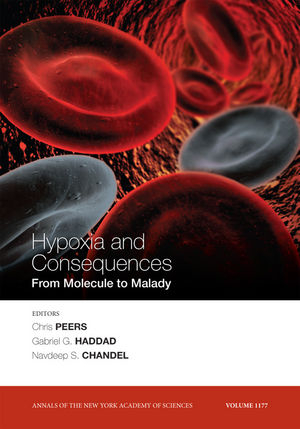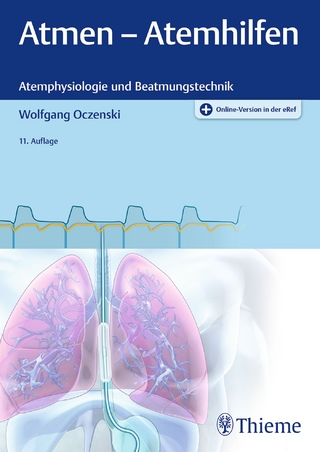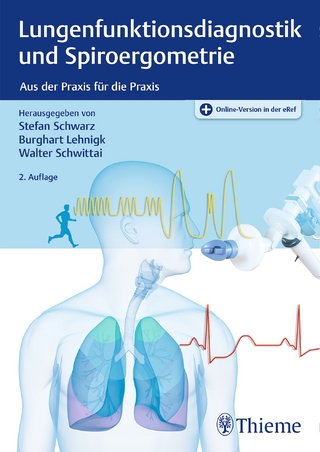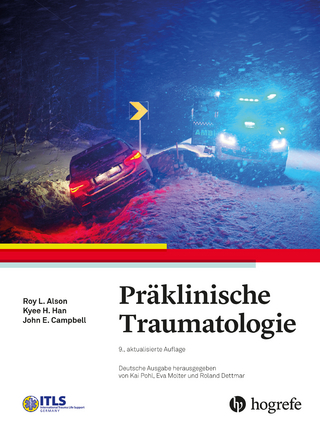
Hypoxia and Consequences, Volume 1177
Wiley-Blackwell (Verlag)
978-1-57331-773-3 (ISBN)
- Titel z.Zt. nicht lieferbar
- Versandkostenfrei innerhalb Deutschlands
- Auch auf Rechnung
- Verfügbarkeit in der Filiale vor Ort prüfen
- Artikel merken
ACADEMY MEMBERS: Please contact the New York Academy of Sciences directly to place your order (www.nyas.org). Members of the New York Academy of Science receive full-text access to the Annals online and discounts on print volumes. Please visit http://www.nyas.org/MemberCenter/Join.aspx for more information about becoming a member.
Chris Peers and Gabriel G. Haddad are the authors of Hypoxia and Consequences, Volume 1177, published by Wiley.
Introduction to Hypoxia and Consequences: From Molecule to Malady (Chris Peers, Navdeep S. Chandel, Gabriel G. Haddad). Part I. Transcriptional Responses to Hypoxia.
1. Regulation of Vascularization by Hypoxia-Inducible Factor 1 (Gregg L. Semenza).
2. FIH-Dependent Asparaginyl Hydroxylation of Ankyrin Repeat Domain-Containing Proteins (Matthew E. Cockman, James D. Webb, Peter J. Ratcliffe).
3. From Polyps to People: A HIghly Familiar Response to Hypoxia (R.J. Hampton-Smith, D.J. Peet).
4. Maintaining Mammalian Iron and Oxygen Homeostasis: Sensors, Regulation, and Cross-Talk (Ameen A. Salahudeen, Richard K. Bruick).
5. Survival in Acute and Severe Low O2 Environment: Use of a Genetic Model System (Priti Azad, Gabriel G. Haddad).
6. Mitochondria and Hypoxic Signaling: A New View (Robert O. Poyton, Pablo R. Castello, Kerri A. Ball, Dong Kyun Woo, Ning Pan).
7. Pathophysiological Consequences of HIF Activation: HIF as a Modulator of Fibrosis (Volker H. Haase).
8. Mitochondrial Metabolism and Cancer (Frank Weinberg, Navdeep S. Chandel).
Part II. Oxygen Sensing.
9. Molecular Imaging: Into In Vivo Interaction of HIF-1 and HIF-2 with ARNT (Rebecca Konietzny, Anna König, Christoph Wotzlaw, André Bernadini, Utta Berchner-Pfannschmidt, Joachim Fandrey).
10. Oxygen-Sensitive Potassium Channels in Chemoreceptor Cell Physiology: Making a Virtue of Necessity (Constancio Gonzalez, Luis M. Vaquero, José Ramón López-López, M. Teresa Pérez-García).
11. Ion Channel Regulation by AMPK: The Route of Hypoxia-Response Coupling in the Carotid Body and Pulmonary Artery (A. Mark Evans, D. Grahame Hardie, Chris Peers, Christopher N. Wyatt, Benoit Viollet, Prem Kumar, Mark L. Dallas, Fiona Ross, Naoko Ikematsu, Heidi L. Jordan, Barbara L. Barr, J. Nicole Rafferty, Oluseye Ogunbayo).
12. Hypoxia Selectively Inhibits KCNA5 Channels in Pulmonary Artery Smooth Muscle Cells (Amy L. Firth, Oleksandr Platoshyn, Elena E. Brevnova, Elyssa D. Burg, Frank Powell, Gabriel H. Haddad, Jason X.-J. Yuan).
13. Enzyme-Linked Oxygen Sensing by Potassium Channels (Paul J. Kemp, Vsevolod Telezhkin, William J. Wilkinson, Ruth Mears, Stuart B. Hanmer, Hanne C. Gadeberg, Carsten T. Müller, Daniela Riccardi, Stephen P. Brazier).
14. Oxygen Sensing in the Carotid Body (José López-Barneo, Patricia Ortega-Sáenz, Ricardo Pardal, Alberto Pascual, José I. Piruat, Rocío Durán, Raquel Gómez-Díaz).
15. Regulation of Oxygen Sensitivity in Adrenal Chromaffin Cells (Colin A. Nurse, Josef Buttigieg, Stephen Brown, Alison C. Holloway).
16. Oxidative DNA Modifications in Hypoxic Signaling (Mark N. Gillespie, Viktor Pastukh, Mykhaylo V. Ruchko).
17. The Neuronal Control of Hypoxic Ventilation: Erythropoietin and Sexual Dimorphism (Max Gassmann, Martha Tissot van Patot, Jorge Soliz).
Part III. Pathophysiological Responses to Hypoxia.
18. Intermittent Hypoxia-Mediated Plasticity of Acute O2 Sensing Requires Altered Red-Ox Regulation by HIF-1 and HIF-2 (Nanduri R. Prabhakar, Ganesh K. Kumar, Jayasri Nanduri).
19. Hypoxia and Neurodegeneration (Chris Peers, Mark L. Dallas, Hannah E. Boycott, Jason L. Scragg, Hugh A. Pearson, John P. Boyle).
20. The Role of NF-B in Hypoxia-Induced Gene Expression (Cormac T. Taylor, Eoin P. Cummins).
21. Role of Hypoxia-Inducible Factors in Epigenetic Regulation via Histone Demethylases (Jun Yang, Ioanna Ledaki, Helen Turley, Kevin C. Gatter, Juan-Carlos Martinez Montero, Ji-Liang Li, Adrian L. Harris).
22. An Essential Role of the HIF-1–c-Myc Axis in Malignant Progression (Young-Gun Yoo, Masami Hayashi, Jared Christensen, L. Eric Huang).
| Reihe/Serie | Annals of the New York Academy of Sciences |
|---|---|
| Verlagsort | Hoboken |
| Sprache | englisch |
| Maße | 179 x 254 mm |
| Gewicht | 454 g |
| Themenwelt | Medizinische Fachgebiete ► Innere Medizin ► Pneumologie |
| Naturwissenschaften ► Biologie ► Mikrobiologie / Immunologie | |
| Schlagworte | Hypoxie |
| ISBN-10 | 1-57331-773-X / 157331773X |
| ISBN-13 | 978-1-57331-773-3 / 9781573317733 |
| Zustand | Neuware |
| Haben Sie eine Frage zum Produkt? |
aus dem Bereich


